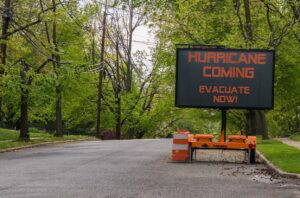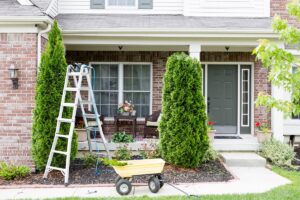While Bing Crosby may love walking in a winter wonderland, the cold temperatures and freezing precipitation can do a number on your home. That’s why here at vipHome.app, we put together this all-in-one winter home maintenance guide. Below, you’ll find quick winter home maintenance tips and tasks to help save your home from winter’s wrath!
Head inside for these winter home maintenance tips
Be safe and roast-y, toast-y warm all winter with the help of these quick interior home maintenance tips.
#1 – Clean or replace your air filters
#2 – Schedule a chimney check-up
A clogged or dirty fireplace can easily lead to a house fire or carbon monoxide poisoning. An issue with the flue – an opening that releases exhaust gases from a fireplace – can cause drafts, heating inefficiencies, and higher utility bills. Get your fireplace inspected annually and make the necessary repairs, especially if you plan to use it this winter. Also, get it cleaned once a year by a certified chimney sweep. Santa will thank you!
#3 – Check and add insulation
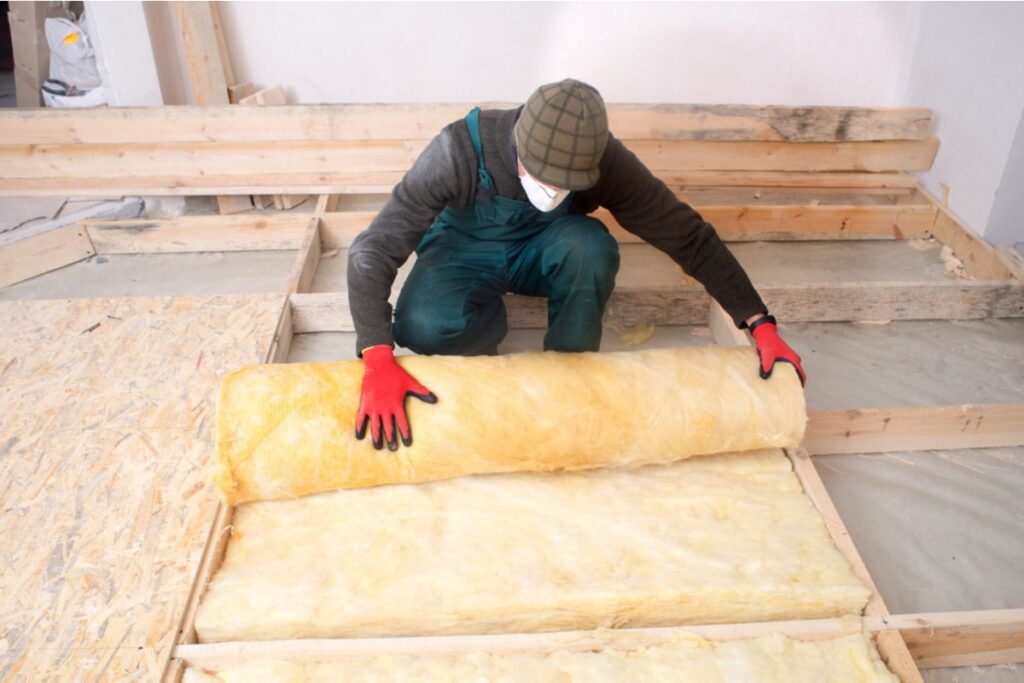
In winter, poor insulation can cause ice dams, mold, and cold toes. While insulation can last a long time, you should check it annually. Here are a few tips to follow:
- Insulation should be at least a foot or more thick in the attic. If you see the ceiling joints, add
more insulation. - New insulation should be added to existing insulation and laid perpendicular to the first layer.
- Do not cover recess lighting as that could lead to a home fire.
- Don’t forget to check pipe insulation!
Make sure to buy the right insulation for your home and region. Each type of insulation is rated with an R-value, which indicates how well it prevents the movement of heat. Find your R-Value with ENERGY-STAR’s Recommended Home Insulation R-Values chart.
Also, take precautions when working with insulation as it can harm your lungs and skin. Cover yourself from head to toe – goggles, a dust mask, long pants, a long-sleeve shirt, and gloves. When in doubt, hire a professional.
#4 – Reverse your ceiling fan direction
This may sound like a counterintuitive homeowner tip for winter, but running your ceiling fan during the winter can help to keep you warmer and lower your heating bills. Ensure your fan is spinning clockwise and run it on the lowest setting. This should help to pull the cool air toward the ceiling and push the warm air down. It should also allow you to set the thermostat a few degrees lower this winter.
To change the fan’s rotation from counterclockwise to clockwise, simply flip a switch on the fan, but always turn off the fan before doing so.
#5 – Seal your windows and doors with new weatherstripping
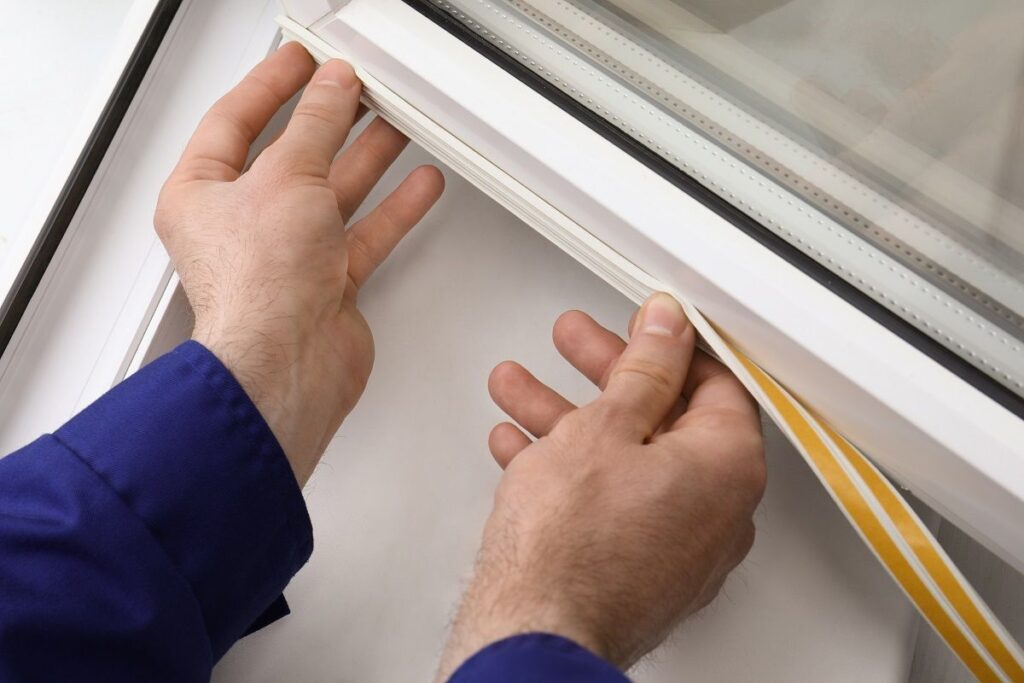
Winter can be un-brr-lieveable! Keep the cool air out and the warm air in by sealing up your windows and doors with foam or rubber strips. Each window or door should only take a few minutes to seal, but if you still notice leakage around your doors afterward, look to replace the threshold or the sweep. Remember your garage doors! They can let warm air out, too, and may require a replacement door sweep.
#6 – Test your sump pumps
Head down to your basement and check your sump pumps. Ensure they are plugged in, and test that they are working. This is a super simple, two-step process.
- Step 1: Pour a bucket of water into the basin.
- Step 2: Wait to see if the sump pump turns on.
Pouring the water into the basin will create water accumulation and should trigger your sump pump. If you notice that the basin remains full, there could be an issue with your pump. First, check that the unit is plugged in, and if it’s not, try plugging it in.
Also, check that your GFCI outlet has not been tripped, which can prevent electricity from powering the motor. If your GFCI outlet has been tripped, make sure there are no electrical hazards before resetting it.
Call a professional if you last scheduled a sump pump cleaning and inspection some time ago. The price of the inspection and maintenance is less than the cost of a flooded basement.
#7 – Check your smoke and carbon monoxide detectors
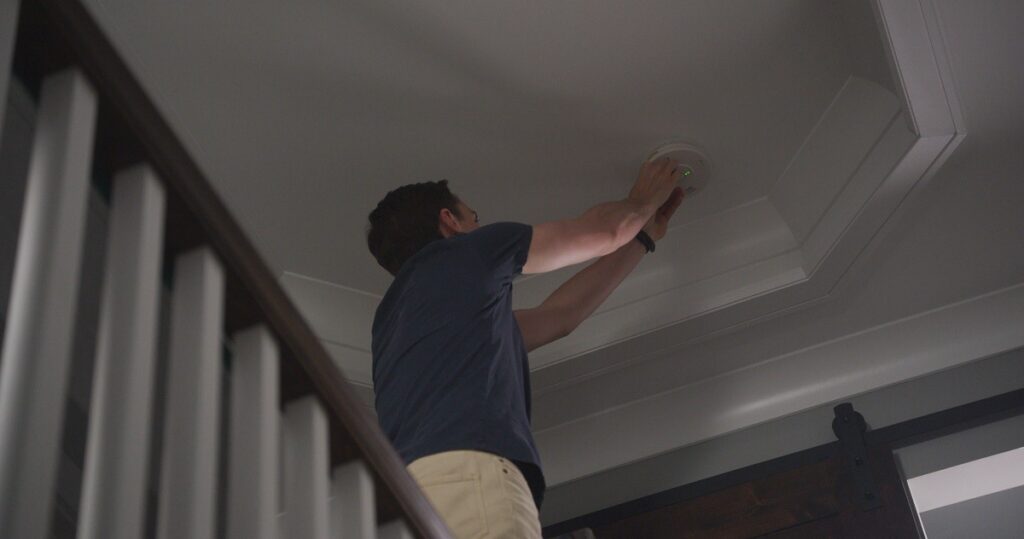
The National Fire Protection Association reports nearly half (46%) of all home heating fires occur in January, February, and December. Carbon monoxide incidents are also more common during winter. Stay as safe as possible by testing your smoke and carbon monoxide detectors the first Saturday of every month, and consider upgrading to an alarm with a 10-year battery. If your detectors are more than 10 years old, replace them immediately.
Snow joke: winter exterior maintenance tips
Fresh snow, chilly temperatures, and blustery winds can make one crave cozy evenings and hot cocoa, but they can also cause trouble for your property. Prepare your home for all the season can throw at it with these winter tips for homeowners.
#8 – Trim large or overreaching branches
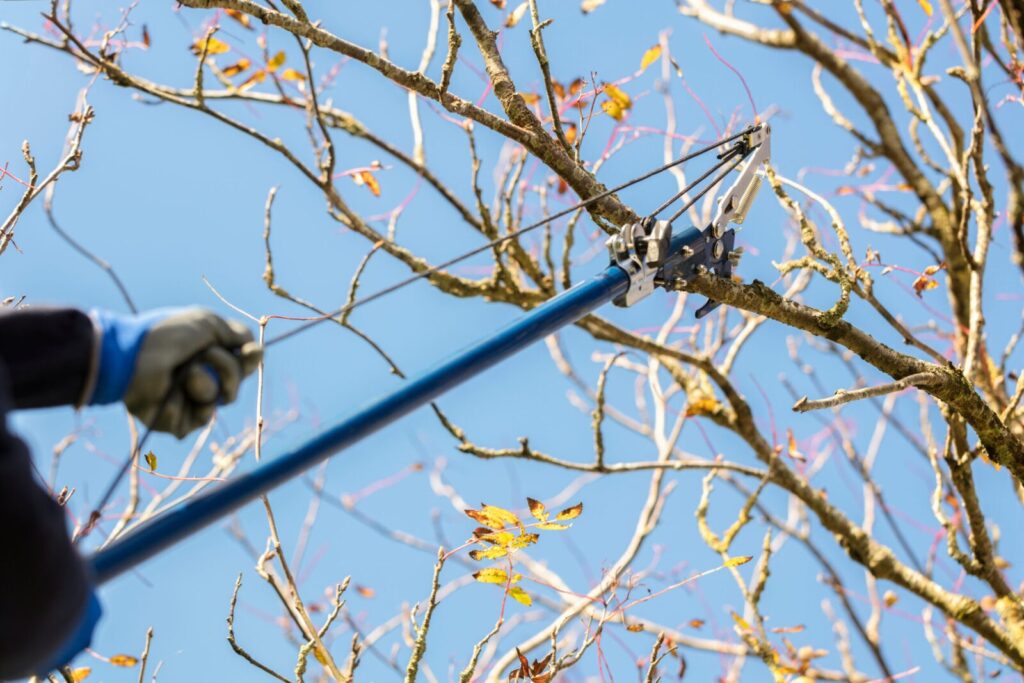
Heavy snow can break weak branches or trees, damaging your home’s roof, siding, and windows. Prevent an issue by walking your property and making note of precarious branches and trees. Cut down those you can reach safely. Call a professional to handle jobs outside of your comfort or ability zone.
#9 – Complete up-on-the-housetop maintenance
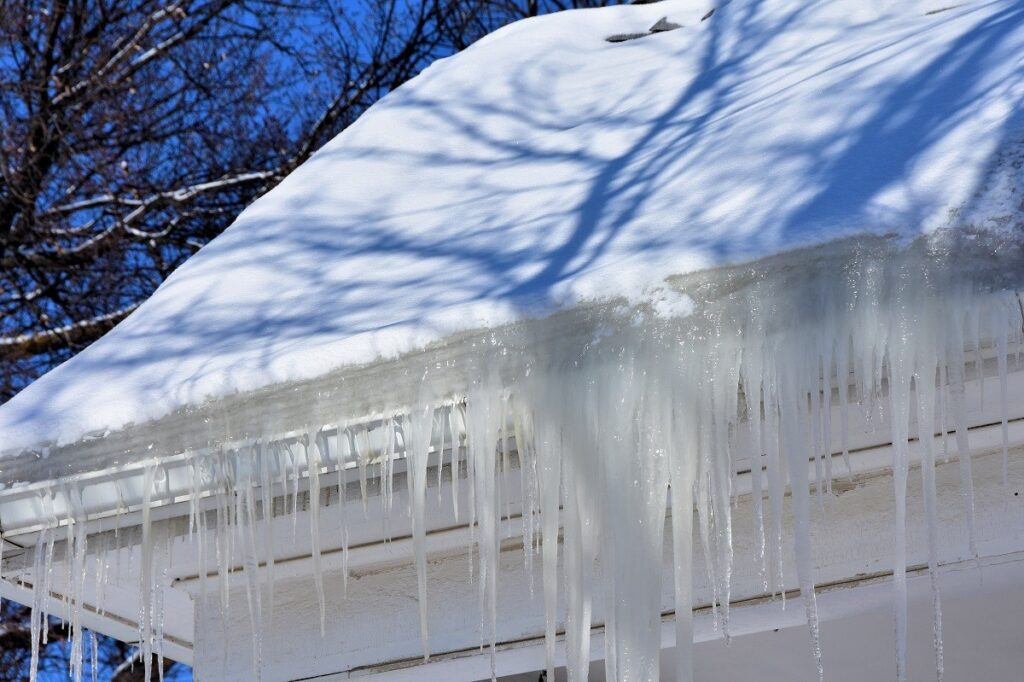
Icicles are fun when they’re electric and hanging from palm trees. Unfortunately, large icicles can become ice dams for homes in snow-packed regions, sending water under the roof’s shingles and inside the home. This issue can create rot and other issues. Prevent ice dams from forming with these quick tasks:
- Clean your gutters in late fall/early winter after the leaves fall to prevent clogs from forming.
- Clean your downspouts and ensure they send water away from your home.
- Complete a visual inspection of your roof.
- Check your eaves and attic for any damp spots or damage.
- Invest in a snow rake to clear any heavy snow that settles during the season.
If you notice any damaged or missing shingles, call a licensed roofer to assess the situation.
#10 – Clean and store outdoor furniture
The harsh elements of winter can damage your outdoor furniture. Snow can rust metal. Plastic can crack during a deep freeze, and wood can rot if improperly sealed. Bring your outdoor furniture inside your garage, basement, or shed, or at least cover it with a waterproof tarp. Make sure to clean the furniture before you store it for the long winter.
#11 – Detach garden hoses and clear water lines
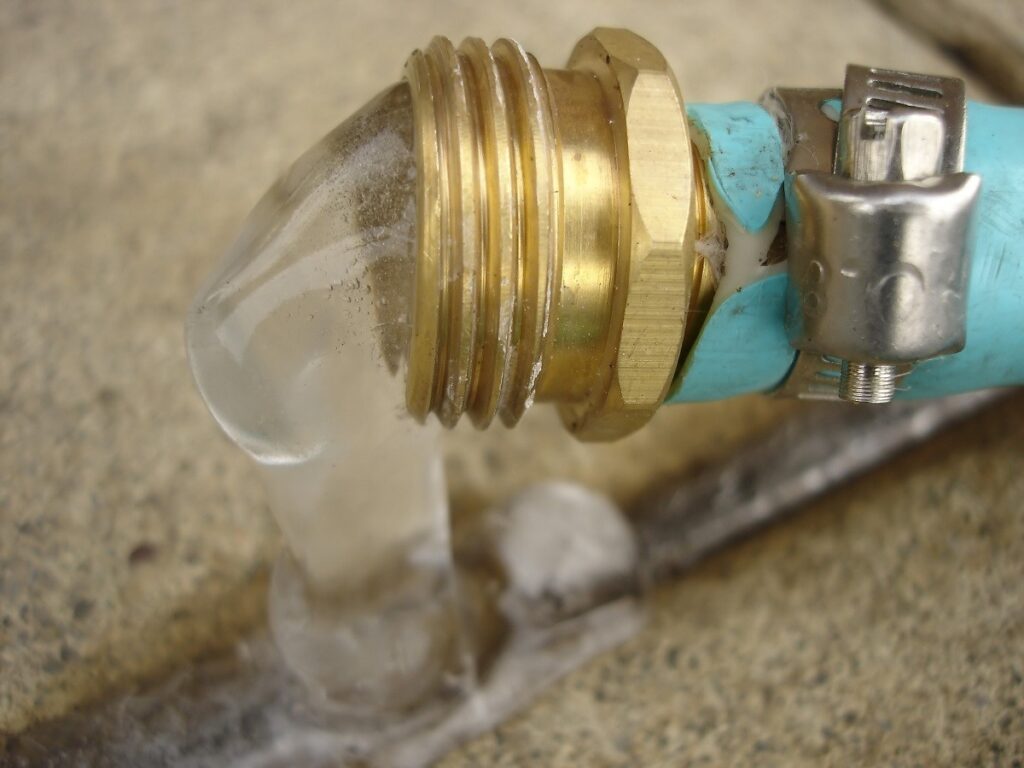
Like bears, garden hoses should rest for the winter and reemerge in the spring. As you may remember from science class, water expands when it transforms from a liquid to a solid. This phenomenon can also happen inside your garden hose and external water pipes and can cause incredible damage to your home.
One of the most frequently forgotten tips for homeowners in the winter is to drain your outdoor spigots. This is easily done by turning off your home’s water supply, opening the exterior faucets, and allowing the water to drain. Once the water stops flowing, turn the spigot off and then turn your home’s water supply back on.
#12 – Repair walkways and seal up cracks
Ice can be dangerous on your walkways and in them. Water inside cracks can expand and break the structure even more. Fill any cracks with the help of a patching mix and bonding agent before ice and moisture can seep in.
#13 – Check your foundation
A hole in your home’s foundation can let unwanted guests, such as bugs and mice, into your home. It can leak heat and help melting snow seep into your basement, leading to expensive water damage.
Prevent these issues by plugging holes with caulk, steel wool, or a sealant. If you find a crack too big to patch, consult an expert who can fix your foundation.
#14 – Fix your outdoor fixtures
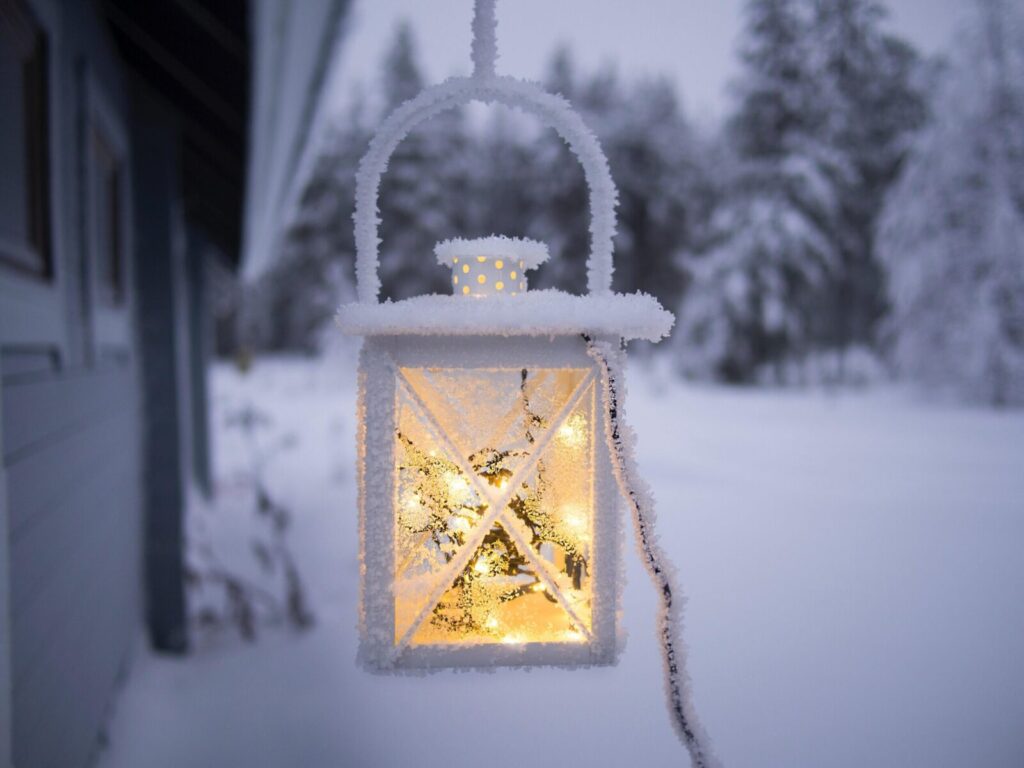
Water and electricity don’t mix, so tackle your outdoor lighting issues before they can cause an electrical hazard. It is also best to tackle this issue earlier in the year, in October or November, before you decorate for the holidays.
As with most electrical issues, don’t handle it yourself. Call a licensed professional.
#15 – Remove window screens
If you still need to switch out your window screens for your glass inserts, now's the time. Ice between your screens and your home is snow good because it can cause expensive water damage once it melts. Screens also can allow air leakage, leading to heat loss and causing your heating system to lose efficiency.
#16 – Safeguard your HVAC unit
Though most condensers are built to survive the winter months, the harsh weather can still threaten your summer relief with debris and water damage. Place a sheet of plywood and bricks or rocks on top to protect the condenser. Do not cover the whole unit.
#17 – Prep for snow
There’s snow place like home, but dirt, ice, and sand can harm your carpets and hardwood floors. Save them by using a welcome mat. Also, designate an area to remove your boots and outerwear, so you don’t drag the water, salt, and dirt into the comfy areas of your home.
Make sure you complete these essential winter tips for homeowners, too!
- Unearth your gloves, hats, and winter gear.
- Find and inspect your shovels and snow-cleaning equipment.
- Buy ice melt, sand, or kitty litter for traction.
- Service your gas-powered snow blower, including checking spark plugs, changing the oil, and adding fresh gas with a stabilizer.
- Charge batteries for electrical equipment.
Don’t forget to stock up on hot chocolate and apple cider.
Get ready for a power outage
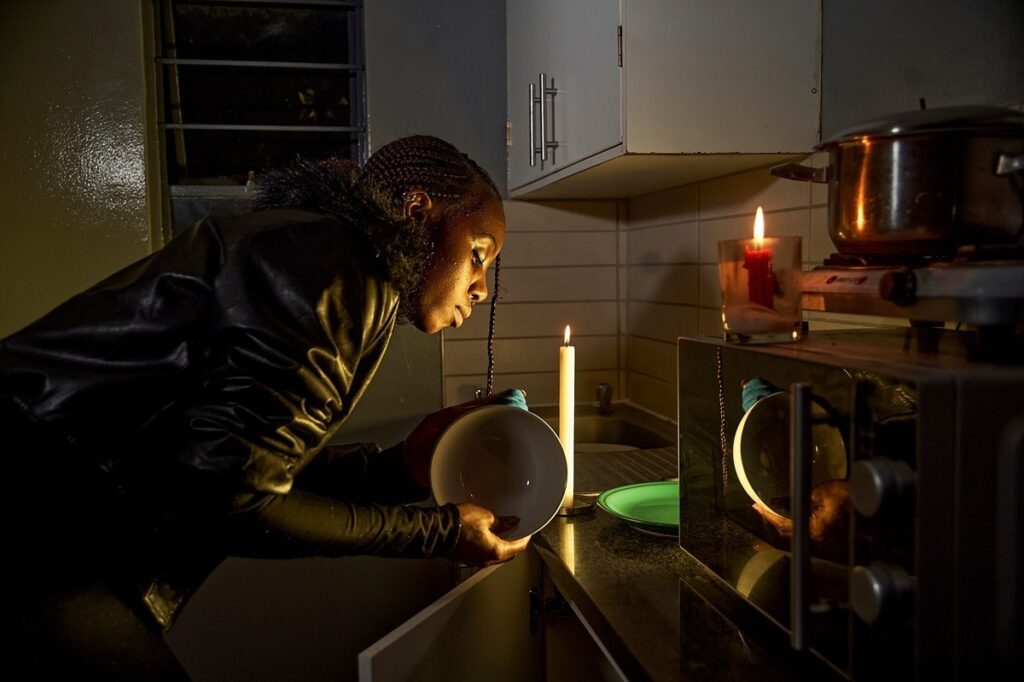
One of the most crucial winter safety tips for homeowners is to prepare for a power outage. Winter power outages generally come with the added worry of freezing pipes and freezing toes. Keep your home safe, warm, and cozy with these simple ways to prepare for a power outage.
#18 – Restock your emergency kit
Be prepared when the power goes out, so you’ll be warm and informed about updates. Here’s a quick list of what you should have in your kit:
- Chargers (for phones)
- Batteries
- Medicines
- Flashlights
- First-aid kit
- Money
- Non-perishable food and water
- Toiletries and personal hygiene supplies
- Protective gear
- Blankets
- Boots
- Warm clothes
If you took any of these items out during the year, replace them. Also, ensure all food and batteries are in date.
#19 – Generate some power yourself
If your area experiences frequent power outages, consider buying a generator. A generator can help you:
- Keep medical equipment running.
- Run a heater or blow dryer to prevent frozen pipes.
- Prevent a home flood by keeping sump pumps working.
- Stop food spoilage from occurring in your refrigerator.
- Stay warm in chilly weather.
Do your due diligence before buying a generator. Choose the generator that has the wattage you need, and if you want to connect the generator to your electrical panel, call a licensed electrician to complete this step. An incorrectly installed generator can be fatal to a lineman.
#20 – Be ready for all seasons
The vipHome.app can help! Our home maintenance app sends you personalized reminders for home maintenance and tailored recommendations for home improvement. The app’s vipTips help you know what to do and when to do it around the home, and our weather alerts help prepare your home for whatever Mother Nature has in store!
Simplify your homeownership with the vipHome.app. Download the app today!
Want to get your home ready for the next season? Check out these spring home maintenance tips now.

